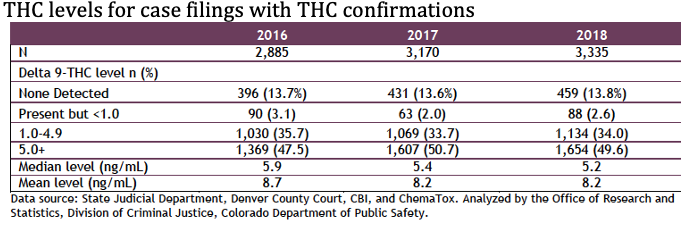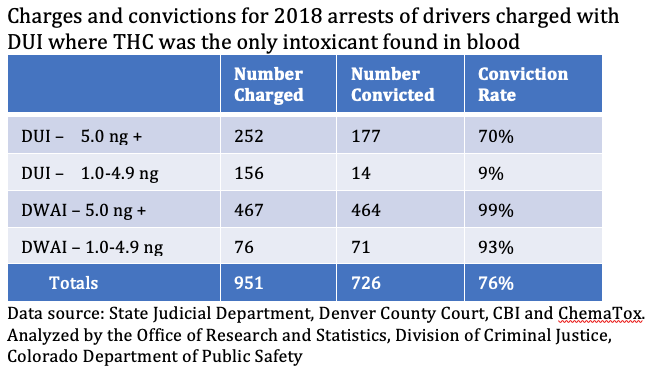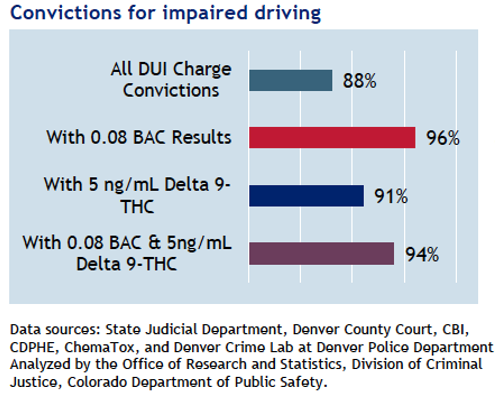 It hasn’t worked for Colorado, but that’s not stopping defense attorney/Senator Nathan Manning from trying to weaken Ohio’s drugged driving laws with his proposed SB 203.
It hasn’t worked for Colorado, but that’s not stopping defense attorney/Senator Nathan Manning from trying to weaken Ohio’s drugged driving laws with his proposed SB 203.
Manning hopes to emulate Colorado by replacing Ohio’s current 2 ng/ml THC per se statute with a rebuttable inference that a driver is DUI if the THC blood level is at least 5 ng/ml. Even sillier, he adds a further inference if the THC level in urine is 25 ng/ml. Someone needs to teach him the fundamentals of THC pharmacokinetics.
Here is what Colorado has learned about its similar THC 5 ng/ml permissible inference law:
Only about half of all those who drive under the influence of marijuana’s THC are found to have a blood THC level at or above 5 ng/ml as shown below.

A 5 ng/ml of THC permissible inference level does not improve conviction rates for impaired drivers who test at or above that level. But it dramatically reduces conviction rates for impaired drivers who test below that level as shown below.

Colorado has a unique two-tier DUI statute. DUI is defined as substantially incapable of safe driving. DWAI (Driving While Ability is Impaired) is defined as driving when safe driving ability is impaired. Criminal and administrative sanctions are similar except that a conviction of DWAI does not result in the loss of driving privileges. Additionally, criminal sanctions for DWAI are slightly reduced compared with DUI for the first DWAI conviction only.
DWAI is a common tool used by prosecutors as a plea bargain tool and in most state statistics, a conviction of DWAI is considered to be a conviction for DUI. In 2018, 43% of DUI arrestees where alcohol was the only drug found were convicted of DWAI, not of DUI. And that includes 3,962 drivers who tested above the BAC .08 alcohol per se limit. DWAI does not mean someone is only slightly impaired.
Colorado’s permissible inference statute for THC applies only to DUI. There is no permissible inference level for DWAI.
Comparing the results of the above table with the one below, is it evident that the 5 ng/ml permissible inference law results in only a 70% conviction rate for DUI compared with an 88% overall DUI Charge conviction rate. The permissible inference law does not appear to improve conviction rates for drivers even above the permissible inference level.
On the other hand, drivers testing below 5 ng are largely protected from conviction, showing a mere 9% conviction rate.
Note that drivers below 5 ng/ml are still convicted of DWAI at a 93% rate, well above all DUI charge convictions as shown below.

